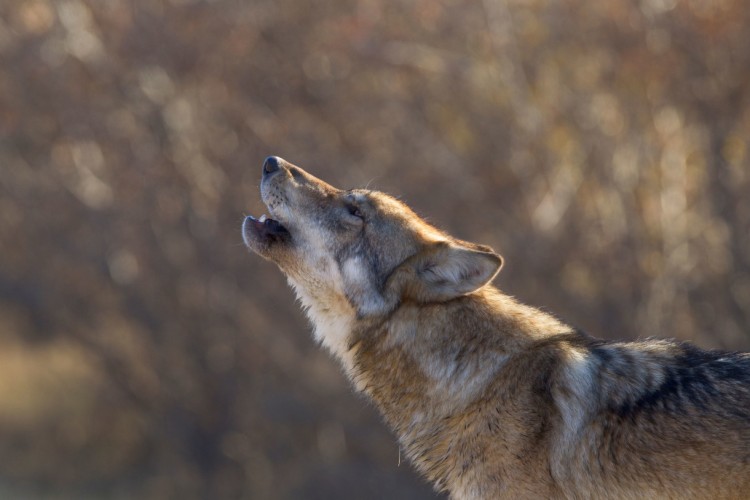
Scientific name of the gray wolf species:
The gray wolf is classified as part of the kingdom Animalia, the familyCanidae and the subfamily Caninae. Gray wolves belong to the species Canis lupus.
Gray wolf evolution:
The gray wolf is the largest member of the Canidae (dog) family. Gray wolves have a shared ancestry with domestic dogs, coyotes and wild dogs such as dingoes. Scientists consider the gray wolf to be the species from which most other wolf subspecies evolved.
Gray wolf communication:
Gray wolves have a complex system of communication that includes a wide range of barks, whines, growls and howls.
Their iconic and legendary howl is one way that gray wolves communicate with each other. A lone wolf may howl to attract the attention of his pack while wolves in the same pack may howl together to establish their territory and declare it to other wolf packs. Howling may also be confrontational or may simply be an answering call to the howls of other wolves nearby.>
Lifespan of the gray wolf:
Gray wolves typically live six to eight years in the wild, although some wild gray wolves have lived up to 13 years.
Gray wolves in zoos sometimes live as long as 17 years.
Gray wolf adaptability:
The gray wolf is an extremely adaptable species. The gray wolf is one of those animal species that survived the last ice age. The gray wolf’s physical characteristics enabled it to adapt quickly to the harsh conditions of the ice age, and its cunning helped it survive in the changing environment.
Gray wolf range and habitat:
Gray wolves were once found in large numbers throughout the Northern Hemisphere—in Europe, Asia and North America. At one time or another, gray wolves have ranged across nearly every type of environment found north of the equator—from deserts to tundra—but they were hunted to near extinction wherever they were found.
Gray wolf diet:
Gray wolves typically prey on large ungulates (mammals with hooves) such as deer, elk, moose and caribou. Gray wolves also eat smaller mammals, such as hares and beavers, as well as fish, birds, lizards, snakes and fruit. Wolves are also scavengers and will eat the flesh of animals killed by other predators, by motor vehicles, and so on.
When wolves find ample food or hunt successfully, they eat their fill. A single wolf may consume as much as 20 pounds of meat in a single feeding.
Gray wolf pack characteristics:
Gray wolves are social animals. They usually live and hunt in packs of six to 10 members and often range over long distances—up to 12 miles or more—in a single day. Typically, several members of a wolf pack will hunt together, cooperating to pursue and bring down large prey.
Wolf packs follow a strict hierarchy, with a dominant male and female at the top. The Alpha male and female are usually the only two wolves in the pack that breed. All of the adult wolves in the pack help to care for the pups by bringing them food, instructing them, and keeping them from harm.
Gray wolves and humans:
Wolves and human beings have a long adversarial history. Although wolves rarely attack humans, both wolves and humans are predators at the top of the food chain.
By the mid-1930s, most gray wolves in the United States had been killed. Today, the gray wolf’s North American range has been reduced to Canada and parts of Alaska, Idaho, Michigan, Minnesota, Montana, Oregon, Utah, Washington, Wisconsin and Wyoming. Mexican wolves, a gray wolf subspecies, are found inNew Mexico and Arizona.
Gray wolf recovery:
Gray wolves were successfully reintroduced to Yellowstone National Park and parts of Idaho in 1995. There is an ongoing debate over whether to keep gray wolves listed as an endangered species. One of the challenges of reintroducing gray wolves into the wild is that people continue to fear wolves, many farmers and ranchers consider gray wolves a menace to livestock, and hunters want the government to declare open season on gray wolves to stop them preying on game animals such as deer, moose and elk
